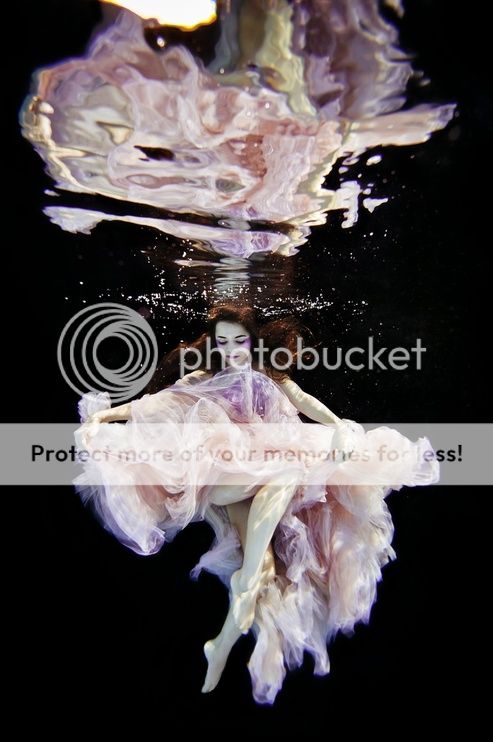-
*Astrella.
User deleted
The Anguane Legends

Legends and Sagas of the Belluno Province - Italy

The ‘anguane’, on the contrary, are mythical female figures resembling witches, sometimes with nails instead of hair, who are said to inhabit rivers, caves and other holes; most times they act as a primeval sort of 'water Goddesses', but often they also keep guard to caves, as openings on to the otherworld.
The ‘anguana’ is a creature linked to the water, with characteristics partly similar to those of a nymph and typical of the Alpine mythology. Legends that concern it are particularly widespread in the Friuli region, where we find her often in town and villages along the course of the Tagliamento – in particular in the Val d'Arzino and the Tagliamento Valley itself.
They are present also in the Ladin valleys of the Dolomites and in the NE of Italy, especially in the territory of the Upper Vicentino and in the Cimbrian territories of the mountains north of Verona. As well as in the Veneto, traces of this ancient mythical figure can be found also in the valleys of eastern (Val Camonica) and western (Valli di Canzo and Vallassina) Lombardy.
The histories on the ‘anguane’ (agane in the traditions of Friuli, Carnia and Ladinia) are connected above all to mountainous regions, but as mythical characters they are sometimes present also in other areas – such as, for example, in the folklore of the Laguna di Grado and Marano, on the Friuli coast. The ‘anguane’ present different characteristics and natures according to the various legends and the areas; they are also known with different names such as subiane, aganis, ogane, gane, vivane, pagane, zubiane, acquane, longane.
The most ancient use of the term seems to date back to the 13th century; as characters, they are present in the ancient Saga dei Fanes – the mythological count mentioned below.
Generally speaking, the ‘anguane’ are represented as spirits of nature akin to the nymphs of the Roman world (most likely, they were the original model of the myth), whose characters are very often being fused with those of the undines and other figures of German mythology. In some areas of Friuli, their myth becomes superimposed (and confused) with that of the krivapete (creatures typical of caves and mountains), with whom they share many features.
Some stories maintain that the ‘anguane’ represent the souls of suffering women, but according to many other traditions they were creatures of the woods, dedicated to a Pagan cult (the myth would evidently merge with the reality of shamanistic religions still present in Friuli and Carnia until at least the 17th century); mostly, however, they were considered non-human figures belonging to the world of spirits.

They are usually described as young women, often very attractive and seductive; some other time, however, they appear as being half-women and half-animal (snake or fish). In other stories they appear as old women that only come out at night and who always manage to disappear before anybody can see their face. In the legends of Friuli they are almost invariably dressed in white, while other traditions say that they love bright colours such as red and orange (more rarely, they appear in ragged black clothes).


The other common element on which most of the legends seem to agree is the fact that the ‘anguane’ tend to live by springs and streams, as they protect water and sometimes fishermen too (to whom – if treated with respect – they usually bring good fortune). In many stories (in common with the krivapete and other supernatural beings) it is mentioned how the ‘anguane’ have taught men many traditional activities such as wool weaving or cheese making (these stories generally end with the men who break the pact or do not show gratitude, and the ‘anguana’ goes away offended, without teaching her essential art – be it the production of salt, sugar, glass, or other skills or produce which are lacking in a particular territory). In the Cimbrian communities of the Lessinia (Verona), the ‘anguane’ were in charge of the wells, and they would wash the clothes of the local people – but would refuse to wash anything black.
Sometimes, exactly as their ‘sisters’ krivapete, they can take a more sinister outlook. In several legends, they are seen terrorizing or mocking the night-time travelers; they can also spread secrets and rumors, especially amongst women; also, if and when insulted, they are inclined to take revenge – even though it is often specified that they never take the life of animals or humans. More features are somehow connected with water: a curious habit they seem to have is to enslave young girls, forcing them to fill willow baskets with water for all their lives (a useless task, as these baskets cannot hold the water); in other versions, the ‘anguane’ are tricked by a human being, who has them filling willow baskets until dawn – thus keeping them busy; indeed, in various areas of Friuli there was a habit of leaving an empty basket outside the homes for the night, so that the ‘anguana’ would spend the whole night trying to fill the basket without succeeding, whilst letting the inhabitants of the house in peace.
According to popular tradition, the ‘anguane’ stopped mixing with humans after the Council of Trento, while their association with the devil is to be seen in the context of a typical process of demonization of Pagan deities during the Middle Ages. The cult of the ‘anguana’ was present in places such as the ‘Scalfìn dal diaul’ (= ‘The Devil’s Heel’), also known as Cèpp da l'Angua (= ‘The Rock of the ‘Anguane’), in Canzo, Lombardy; this event is also remembered during the sophisticated celebrations of the so-called ‘Giubiana da Canz’, with the re-enactment of the mythical character.
Also, several place names in Veneto remind of the ‘anguane’ – especially caves, boulders, rock ledges and valleys; the Anguan-tal, for example, is an area of Contrada Pagani, Campofontana, in the mountains of Lessinia (province of Verona), while the “Buso dell'Anguana” is the name given to several caves in the province of Vicenza.
The 'Mazaròl'
In the valleys of the province of Belluno the myth of the Mazaròl is still quite widespread and very much alive to this day: this is a tiny, playful creature resembling a gnome, always dressed in red and with a cap, who is said to wander in the woods and take pleasure in leading people astray, causing them to lose their way – especially at dusk.
The 'Mazaròl' is a fantastic character typical of the folklore of Primiero and some areas of the province of Belluno. Generally, it has the characteristics of an old man with a robust built, dressed in red with a turquoise jacket, a big hat and a black mantle. He is usually quite good natured, but a bit grumpy and wild (as it would be!); being very susceptible and also vindictive towards whoever betrays his faith, he would sometimes hide under his mantle the children who do not behave. Also, whoever puts inadvertently a foot over a footprint left by him would be obliged to follow his footprints until coming to the cave where he dwells; there, the unfortunate traveler would forget everything about himself.
According to a legend, the 'Mazaròl' from time to time abducts people in order to make them his slaves. An episode frequently told recounts the story of a girl from Primiero who found herself in the presence of the 'Mazaròl' soon after having stepped on one of his footprints. The creature then blew on her face, and so she forgot all her past life, spending several years at his service. However, the 'Mazaròl' treated her well, and taught her how to make butter, cheese and a special round cheese locally known as ‘tosella’; he also promised her that he would teach her how to extract wax from whey, but he didn’t make in on time: one day a hunter who was passing through the woods recognized the girl, and brought her back to the village. Several attempt were made in order to retrieve the girl’s memory, but to no avail; eventually, the only thing that worked as an antidote was the milk from a white goat that was offered to the girl by an old lady. Being so happy at having managed to go back home, the girl taught everyone in the village how to make butter, cheese and the ‘tosella’ – but despite that, still today, in Primiero it is not known how to extract wax from whey!
The ‘Wild Man’
The ‘Wild Man' ("Uomo selvatico" in Italian) is a legendary human being present in many popular traditions, especially in the valleys of the Alps and Apennines, where it is being given different names depending on the local language; for instance, in the area of the Dolomites, it is known as Om salvàrech in the province of Belluno and as Om pelòs (‘Hairy Man’) in Trentino.
The stories connected to this creature – commonly described as hirsute, with long hair and unkempt beard, are handed down from time immemorial in the oral traditions. It is interesting to report the definition of ‘wild man’ as it is given by Giovanni Sebesta, founder of the Etnographic Museum of Trentino: “(The ‘wild man’) is substantially a common mortal who lives outside of the human consortium, preferring instead isolated places such as mountains and woodlands. In constant contact with nature, this has made him develop to the fullest his physical characteristics, which ensure him his livelihood: strength, hardiness and an exceptional flair in hunting down his preys.
He is quite timid, and tends to shun human interaction, preferring instead to isolate himself – to the point of weakening his psychic capacities, which gives him a ‘dumb’ outlook sometimes. He doesn’t wash or clean himself; he does not shave or cut his hair, so that these tend to merge, reaching down to his knees: for this reason, probably, he becomes a frightening figure, exalted by the goatskin mantle with which he wraps himself up. However, a gentle act may touch him and soften him sometimes, as he feels the need to fraternize with other men – and so he occasionally entertains himself with humans, teaching them the arts of milk production and cheese making, of which he is a master”.
The places where there is an association with the “wild man” abound: he appears in cycles of frescoes in several villages of the Alps, but a representation of the “wild man” even appears among the spires of the Duomo in Milan; his character is also present in the celebrations of the “Giubiana da Canz”, which takes place in Canzo every January (see the ‘anguane’ above).
Besides being a legendary character and a widespread iconographic symbol in the whole of the Alps, the “uomo selvatico” is also a Carnival mask; his function is almost invariably that of a scapegoat, and he personifies the obscure and incontrollable side of Alpine nature. However, the “wild man” never totally underwent the transposition from the ancestral and unsettling figure of Alpine popular imagination to theatrical mask, as it happened with other characters – if not occasionally in performances at the time of Carnival.
In the valleys of Canavese (Piedmont) it is considered to be a wise man, who knows the secrets of making butter and the rearing of domestic animals. He resists everything apart from wind, and it is said that he is so old as to have witnessed the countryside change and evolve seven times: seven times was the valley a field, seven times a pasture, and seven times woodland – until it was abandoned.
He teaches shepherds how to produce butter, cheese and ricotta, and how to manufacture kitchen utensils with a chisel; in some villages he would also have taught the secret art of transforming milk into oil (sic) – if the shepherds hadn’t allowed him to go away! It even seems that the “wild man” laughs when it rains and cries when the sun shines; this behaviour – incomprehensible at first sight – is sometimes explained (perhaps naively) by the fact that the weather conditions of the present are the opposite of those that will follow (but being the creature ‘wild’, I think a more likely explanation is that he would rejoice in what people normally consider ‘bad weather’).
‘Selvatico’ (‘wild’) is also a term used in heraldry to indicate a hirsute or hairy man, girdled and crowned by leaves, sometimes armed with a club and cloaked with a skin mantle on his shoulders.
A similar character to the “wild man” appears in the “Fiabe italiane” (‘Italian Tales’) by Italo Calvino, while in other traditions the figure of the “wild man” is present in the folklore of many nations – at least since the Middle ages (and before, as even the character of Enkidu, in the myth of Gilgamesh, shares some of his characteristics). The “wild man” appears also in the following Brother Grimm tales: “The Wild Man” (De wilde Mann) and “Iron John” (Der Eisenhans; "L'uomo di ferro" in Italian; "Zan De Rame" – 'Copper John' – in the Ladin variant); in this latter tale, in particular, he has the function of a Helper or a Donor.

Source: www.italy-tours-in-nature.com/dolomites-myths.html
Edited by *Astrella - 20/9/2013, 00:34.
The Anguane Legends16 Settembre 2013 |


